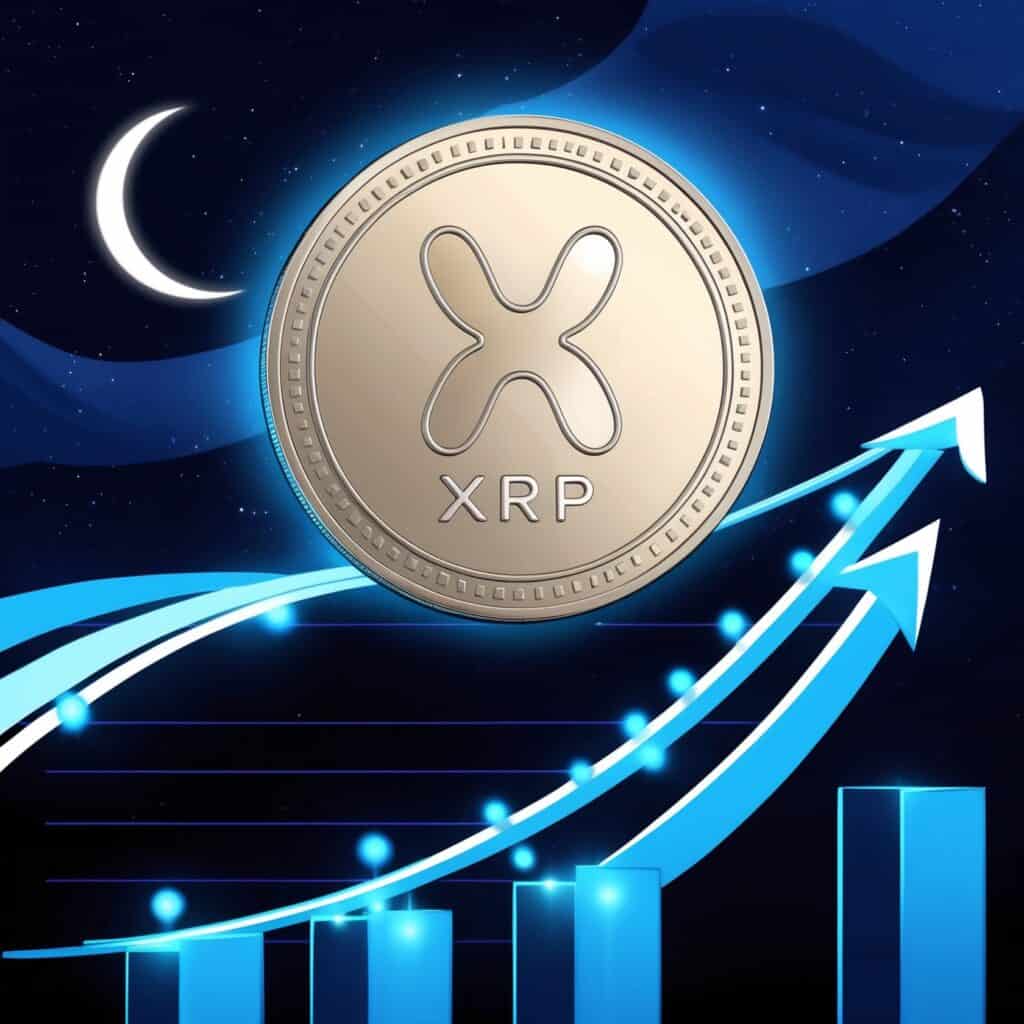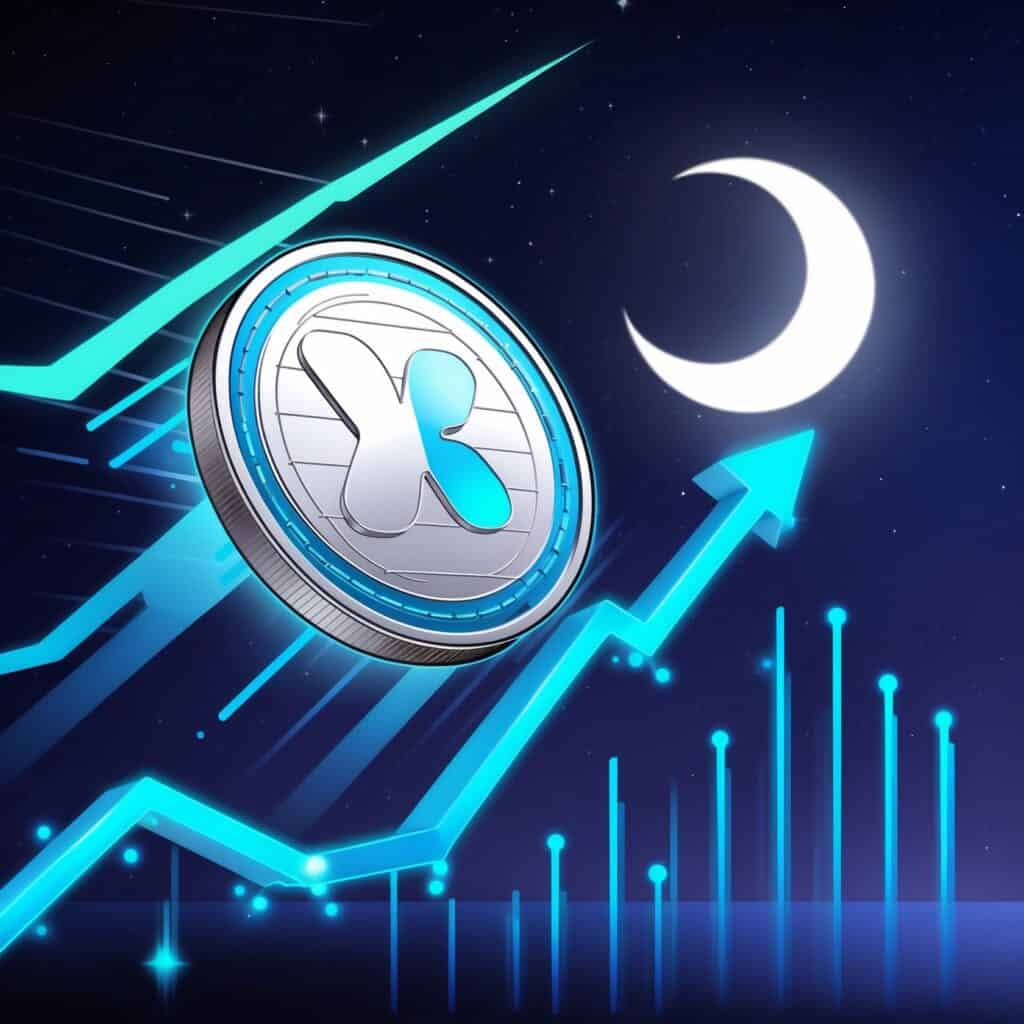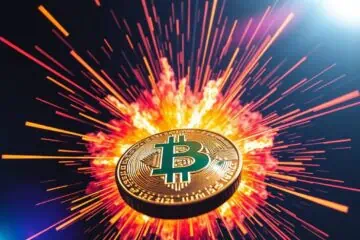Ripple (XRP) continues to be one of the most talked-about cryptocurrencies in 2025. Designed for fast, low-cost international payments, Ripple is reshaping how money moves around the world. Whether you’re a beginner or an experienced crypto enthusiast, this guide will answer all your important questions about Ripple and help you decide if it belongs in your portfolio.

What is Ripple (XRP)?
Ripple is a digital asset created to solve problems in the traditional banking system, particularly for cross-border payments. While many cryptocurrencies aim to replace traditional finance, Ripple (the company) focuses on improving it. Ripple developed RippleNet, a global network that enables real-time, secure, and cost-effective transactions between financial institutions.
XRP is the native cryptocurrency of the XRP Ledger, an open-source blockchain designed for speed and scalability. Unlike Bitcoin, which can take minutes or even hours to confirm transactions, Ripple (XRP) transactions settle in just 3–5 seconds.
What is the Difference Between Ripple and XRP?
Many people use Ripple and XRP interchangeably, but there is a clear distinction:
- Ripple is the private company that develops payment solutions and software for banks.
- XRP is the digital token that operates on the XRP Ledger, serving as a bridge currency for facilitating transactions.
Think of Ripple as the tech company, and XRP as the fuel that powers some of its products.
How Does Ripple (XRP) Work?
Ripple (XRP) operates on a decentralized ledger called the XRP Ledger. Unlike Bitcoin’s proof-of-work system, XRP uses a consensus protocol, where trusted validators agree on the order and validity of transactions. This approach allows XRP to process up to 1,500 transactions per second with very low fees, often less than a fraction of a cent.
Financial institutions can use XRP to source liquidity instantly instead of pre-funding accounts around the world, making cross-border payments faster and cheaper.
Can You Mine Ripple (XRP)?
No, Ripple cannot be mined. When XRP was launched, 100 billion tokens were created, and no more will ever be generated. A portion of XRP is released from escrow each month to ensure market stability. This structure is very different from Bitcoin or Ethereum, where mining is integral to the supply model.
What Are the Real-World Use Cases of XRP?
Ripple is primarily used for:
- Cross-border payments: Reducing transaction times and costs for sending money internationally.
- Liquidity sourcing: Financial institutions can use XRP as a bridge currency between two different fiat currencies.
- Micropayments and remittances: The low transaction cost makes XRP ideal for sending small amounts globally.
Ripple’s technology is already being adopted by banks, remittance services, and payment providers across the world.
How to Buy and Store Ripple (XRP)
Buying Ripple is easy through trusted cryptocurrency exchanges. Here’s a broker where you can access XRP. Once purchased, it’s crucial to store your XRP safely. Options include:
- Hardware Wallets (Ledger, Trezor): Best security against hacks.
- Software Wallets (Trust Wallet, Exodus): Easy-to-use options for mobile or desktop storage.
- Exchange Wallets: Convenient for active trading but less secure for long-term holding.
Always enable two-factor authentication and backup your recovery phrases when setting up a wallet.
Is Ripple a Good Investment?
Ripple (XRP) has shown strong resilience despite regulatory battles and market volatility. Its real-world utility in global payments, along with partnerships with major financial institutions, gives it an edge compared to purely speculative cryptocurrencies.
However, like any crypto investment, XRP carries risk. Always consider your risk tolerance, do thorough research, and diversify your investments. One major risk to be aware of, relates to where you hold your crypto assets.
There’s tons of crypto assets to choose from, here’s top 4 crypto or even $Trump coin which is receiving a lot of media views lately.
What is the Current Legal Status of Ripple?
Ripple has faced a long-running lawsuit from the U.S. Securities and Exchange Commission (SEC), which alleged XRP was sold as an unregistered security. In mid-2023, a partial ruling declared that XRP is not a security when sold to the public, boosting investor confidence.
That said, legal proceedings continue to influence market sentiment. Keep an eye on updates, as future rulings could impact Ripple’s business expansion and XRP’s adoption.

How Does Ripple (XRP) Compare to Bitcoin?
Ripple (XRP) and Bitcoin serve very different purposes:
- Bitcoin aims to be a decentralized store of value (“digital gold”).
- Ripple (XRP) focuses on enabling fast, low-cost transactions for financial institutions.
Key Differences:
| Feature | Ripple (XRP) | Bitcoin |
|---|---|---|
| Transaction Speed | 3–5 seconds | 10–60 minutes |
| Transaction Fees | Fractions of a cent | $1–$20+ |
| Consensus Mechanism | Unique Node List | Proof-of-Work |
| Scalability | 1,500 TPS | 7 TPS |
What is the XRP Ledger?
The XRP Ledger is a decentralized blockchain designed specifically for high-speed, low-cost transactions. It supports not just payments but also tokenized assets and decentralized finance (DeFi) applications. Developers can build applications on the XRP Ledger thanks to its smart contract capabilities and low energy consumption.
What is RippleNet?
RippleNet is Ripple’s global payments network. It connects banks, payment providers, and digital asset exchanges, allowing them to send money across borders instantly and reliably. RippleNet uses XRP for on-demand liquidity solutions, eliminating the need for pre-funded accounts in destination currencies.
How Ripple (XRP) Actually Settles Transactions Faster Than Traditional Systems
One of the biggest strengths of Ripple’s digital asset is the speed at which it can settle payments. Unlike traditional financial networks like SWIFT, which rely on multiple intermediaries and manual confirmations, the XRP Ledger uses a decentralized consensus model called a Unique Node List (UNL).
Instead of mining like Bitcoin, trusted validators, banks, exchanges, and institutions, verify transactions in seconds without consuming massive amounts of energy.
Each transaction on the XRP Ledger finalizes typically within 3 to 5 seconds, making it ideal for real-time cross-border payments. With no need for pre-funded accounts or delayed clearance, Ripple’s technology reduces settlement risk and significantly cuts costs for financial institutions.
This near-instant settlement capability is why many see Ripple’s blockchain as a serious alternative for global money movement.
Why a Reserve Is Required to Activate a Ripple (XRP) Wallet
A common point of confusion for new XRP users is the requirement to maintain a small reserve balance in every wallet. Unlike some other cryptocurrencies, you cannot activate an XRP wallet with a zero balance.
The XRP Ledger requires a base reserve (currently 10 XRP) to activate an address. This reserve is not a fee or a payment, it remains locked in the wallet and can only be accessed if the network changes the minimum requirement in the future.
The purpose of the reserve is to protect the XRP Ledger from spam attacks and the creation of millions of fake addresses that could congest the network. By enforcing a small cost to create and maintain wallets, the system maintains network health and efficiency.
As the XRP Ledger continues to scale and evolve, the reserve requirements are reviewed periodically by the validator community and can be adjusted if needed.
What Happens to XRP if Ripple the Company Fails?
Given the long legal battle between Ripple and regulatory authorities, many investors wonder:
What would happen to XRP if Ripple Labs shut down?
It’s important to understand that XRP and the XRP Ledger are not dependent on Ripple the company. The XRP Ledger is a decentralized, open-source blockchain maintained by a network of independent validators spread across the world. Even if Ripple ceased to exist tomorrow, the XRP Ledger would continue to operate without disruption.
Ripple Labs plays a major role in promoting XRP’s adoption through partnerships and liquidity programs, but it does not control the network itself. XRP’s value might face volatility if Ripple exited the market, yet the underlying technology would remain intact, and other developers or businesses could step in to fill the ecosystem gap.
For long-term investors, this independence highlights why XRP is considered a true decentralized digital asset, even if closely associated with a corporate entity today.
How Ripple’s On-Demand Liquidity (ODL) Powers Cross-Border Transactions
Ripple’s On-Demand Liquidity (ODL) solution is one of the most transformative parts of its payment network.
Traditionally, banks needed to pre-fund foreign currency accounts (nostro accounts) in multiple countries to facilitate international payments, locking up massive amounts of capital.
ODL changes that model entirely.
With ODL, a bank can send money across borders without holding foreign currency reserves. Here’s how it works:
- A bank in Australia sends AUD.
- It instantly converts the AUD to XRP on a digital asset exchange.
- XRP is then sent across the XRP Ledger within seconds.
- At the destination, XRP is converted into USD, EUR, JPY, or any local currency.
This method drastically reduces the need for pre-funded liquidity, cuts transaction costs, and accelerates settlement timeframes to mere seconds instead of days.
ODL is already being used by companies like Tranglo, SBI Remit, and other financial institutions around the world to optimize their international remittance services.
The Main Risks to Consider When Investing in Ripple’s Digital Asset
While Ripple’s technology offers significant advantages, it’s crucial to understand the risks involved in holding XRP:
- Regulatory Uncertainty: Ongoing and future legal decisions, particularly in the United States, can affect market access and adoption.
- Liquidity Risks: Although XRP has strong liquidity compared to many cryptos, sudden market changes could create slippage risks for large transactions.
- Competition: Alternative payment-focused blockchains like Stellar Lumens (XLM) and future innovations from central banks (CBDCs) could challenge XRP’s niche.
- Concentration Concerns: A significant portion of XRP supply is still held by Ripple and associated entities, leading to debates about decentralization and market influence.
Investors should weigh these factors carefully and consider XRP as part of a diversified digital asset strategy rather than an all-in bet.
Future Upgrades to the XRP Ledger: What’s on the Horizon?
The XRP Ledger continues to evolve to meet growing market needs.
Among the major future upgrades under development are:
- Hooks Amendment: A lightweight smart contract functionality allowing logic to be added to XRP transactions, such as automatic payments or trust triggers without bloating the ledger like Ethereum’s heavy smart contracts.
- Sidechains for EVM Compatibility: Developers are building sidechains that allow interoperability with Ethereum, meaning decentralized finance (DeFi) applications could use XRP liquidity.
- Expanded NFT Capabilities: New standards on the XRP Ledger will support NFT minting and trading without high transaction fees.
These upgrades position the XRP Ledger not just as a payment network but as a broader financial infrastructure platform capable of powering tokenization, decentralized finance, and more.
Final Thoughts: Is Ripple the Future of Payments?
Ripple (XRP) continues to stand out because of its real-world utility, strong institutional partnerships, and technical advantages over many traditional cryptocurrencies. Whether you’re looking to invest, use it for remittances, or simply diversify your portfolio, Ripple offers a compelling case for being part of the future of digital finance.
Want to get started? Head to Swyftx to buy Ripple (XRP) easily and securely.


0 Comments